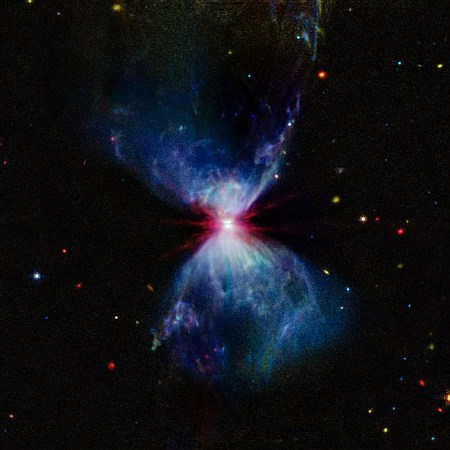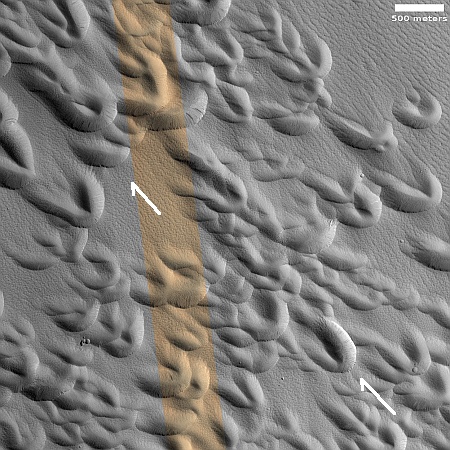Webb takes false-color infrared image of bi-polar protostar nebula
Scientists using the Webb Space Telescope have now produced a new false-color infrared image of the bi-polar hour-glass-shaped protostar nebula dubbed L1527.
That image is to the left, created from data from Webb’s MIRI (Mid-Infrared Instrument) and cropped, reduced, and sharpened to post here. While it is not quite a pretty as a prevous Webb infrared image taken in 2022 by its NIRCam (Near-Infrared Camera), it provides new information about the make-up of materials within this nebula. From the caption:
The areas colored here in blue, which encompass most of the hourglass, show mostly carbonaceous molecules known as polycyclic aromatic hydrocarbons. The protostar itself and the dense blanket of dust and a mixture of gases that surround it are represented in red. (The sparkler-like red extensions are an artifact of the telescopes’s optics). In between, MIRI reveals a white region directly above and below the protostar, which doesn’t show as strongly in the NIRCam view. This region is a mixture of hydrocarbons, ionized neon, and thick dust, which shows that the protostar propels this matter quite far away from it as it messily consumes material from its disk.
Previous to Webb, this object had mostly been studied in 2012 using radio and submillimeter wavelengths (see the papers here and here), but those papers determined this is possibly the youngest known protostar, less than 100,000 years old.
Scientists using the Webb Space Telescope have now produced a new false-color infrared image of the bi-polar hour-glass-shaped protostar nebula dubbed L1527.
That image is to the left, created from data from Webb’s MIRI (Mid-Infrared Instrument) and cropped, reduced, and sharpened to post here. While it is not quite a pretty as a prevous Webb infrared image taken in 2022 by its NIRCam (Near-Infrared Camera), it provides new information about the make-up of materials within this nebula. From the caption:
The areas colored here in blue, which encompass most of the hourglass, show mostly carbonaceous molecules known as polycyclic aromatic hydrocarbons. The protostar itself and the dense blanket of dust and a mixture of gases that surround it are represented in red. (The sparkler-like red extensions are an artifact of the telescopes’s optics). In between, MIRI reveals a white region directly above and below the protostar, which doesn’t show as strongly in the NIRCam view. This region is a mixture of hydrocarbons, ionized neon, and thick dust, which shows that the protostar propels this matter quite far away from it as it messily consumes material from its disk.
Previous to Webb, this object had mostly been studied in 2012 using radio and submillimeter wavelengths (see the papers here and here), but those papers determined this is possibly the youngest known protostar, less than 100,000 years old.






